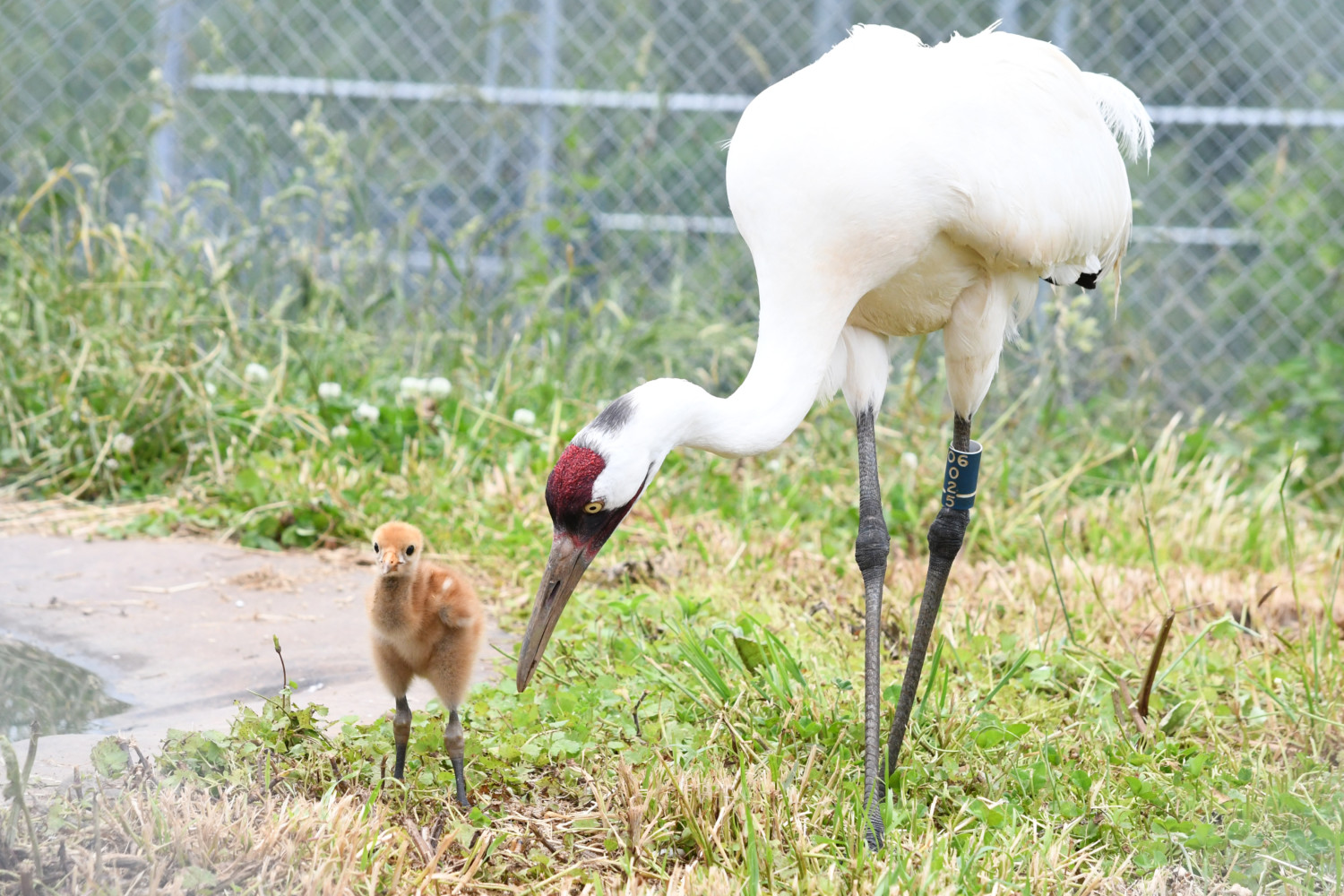Baby Whooping Crane Born At National Zoo
[ad_1]
There is some very good news for whooping cranes. The Smithsonian Conservation Biology Institute (SCBI) in Entrance Royal, Virginia, announced that its 1st-at any time whooping crane toddler has hatched. The chick is thriving, which is encouraging as the species is really endangered.
SCBI, which is portion of Smithsonian’s Countrywide Zoo and Conservation Biology Institute, shared the information of the chick, which hatched on May perhaps 26, on social media.
“Whoop! Whoop! For the to start with time, a whooping crane—one of the most endangered species of crane in the planet —hatched Might 26 at the Smithsonian Conservation Biology Institute, and is thriving,” the zoo wrote in a Fb article exhibiting the toddler fowl.
The egg went on a extensive journey in advance of arriving at the Smithsonian facility.
“Our hen staff took the then-egg below their wing May 18, immediately after the Intercontinental Crane Basis and Necedah Countrywide Wildlife Refuge discovered the egg deserted in a wild nest in Wisconsin,” wrote the Countrywide Zoo in a Twitter write-up (together with the photograph of the adorable chick standing between clovers).
A 16-yr-aged woman named Tehya and a 25-12 months-previous male named Goliath had been selected to provide as surrogate moms and dads. The bird group is inspired by the colt’s advancement and report that the grown ups are protecting and attentive to its demands. pic.twitter.com/jZptVe3oA0
— Nationwide Zoo (@NationalZoo) June 17, 2022
A second tweet in the sequence also notes that two adult whooping cranes had been picked to serve as the baby’s surrogate mother and father: a Tehya, a 16-12 months-previous female, and Goliath, a 25-12 months-old male. The pair had already been caring for two of their individual eggs this spring, but both turned out to be infertile. A push release from the institute described that biologists swapped out the infertile eggs for a fake egg so they’d continue on their parenting behaviors. Then, just ahead of the egg from Wisconsin was ready to hatch, they switched it in for the fake egg.
“When the colt hatched, the two dad and mom right away began caring for it,” the statement states. “Keepers and veterinarians are making it possible for the family members to bond with no interference.”
Whooping crane chicks are identified as “colts” because of their long legs and visual appearance of galloping when they operate. While they fledge in between 80 and 100 days outdated, the colts are inclined to continue to be shut to their parents’ territories for up to 9 months.
Authorities estimated that only 22 whooping cranes remained in the wild in 1941. Their in the vicinity of-extinction was caused by many factors — commencing in the 1800s and continuing right now — such as the destruction of their habitats, searching and poaching, local weather change, pure disasters and oil spills. Many thanks to conservation efforts, somewhere around 700 whooping cranes now dwell in the wild, and 140 live in human care. According to the U.S. Geological Study (USGS), all dwelling whooping cranes are descendants of a main flock of only 16 birds.
[ad_2]
Supply connection

